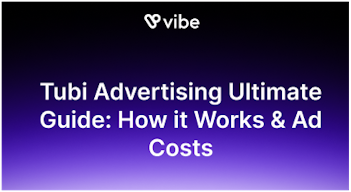Local TV Advertising Costs
In the last 3 years, Connected Television also known as “Streaming TV,” has jumped from attracting around ⅕ of US TV viewership to over 90%! Several factors can explain this increase: technological advances, cost, increasing familiarity with tech, but really none of this would have happened as quickly if the whole country hadn’t had to shut down for 2 years, leaving viewers hungry for affordable, on-demand, high quality content.
Similarly, Connected TV advertising has grown exponentially in order to meet viewers where they are, but also because placing ads on a streaming program as opposed to a cable or broadcast show is massively less expensive. Really, it’s an experience much more akin to traditional digital advertising like Meta or Google Ads than brokering long-term deals with cable networks or local news stations.
Today, local advertisers nationwide are generally still gun-shy about television advertising campaigns because they’ve always been financially out of reach, but a CTV campaign with CPM-based budgets, real-time reporting and self-serve, intuitive platforms can make a huge impact for local brands willing to make the leap.
Let’s take a closer look at the cost and processes associated with local TV advertising.
Local TV advertising landscape
In today’s media buying landscape, there are two major types of TV advertising channels, which include some subcategories:
Linear TV
Linear television is what we think of as “traditional” television that broadcasts programs in a certain order, listed in your trusty weekly television digest. It stands in opposition to “on demand” streaming which allows viewers to decide when and how to watch specific programs. Within the linear television framework, viewers can opt for different delivery systems: broadcast or cable. Same goes for advertisers.
Broadcast
Broadcast television transmits programs by using public airwaves, which means channels are available for free to any household within the range of a transmitter. All revenue comes from selling commercial spots to advertisers. Broadcast television viewership has taken a dramatic downturn, but remains strong for live events, especially sports and politics.
Cable
Cable television is a more recent option in the linear television category, and while it offers a more customized experience, it still does not allow for on-demand viewing. Cable television programs reach households through coaxial or fiber-optic cables and, contrary to broadcast television, viewers are charged a subscription fee to access their programs.
Connected TV/OTT
Connected Television and “Over-The-Top” Television are basically the same from an advertiser’s point of view, but different in the ecosystem of on-demand streaming. The first refers to the machine through which viewers are able to receive the streamed content (quite literally a television connected to the internet) and the second to the on-demand content they are receiving through an “over-the-top” device connected to their television (think of a fire stick or Roku dongle.)
YouTube
YouTube has hopped on the CTV bandwagon, with YouTubeTV now offering similar capabilities to your favorite streaming channels like Hulu or Sling.
TV Advertising Rates
Ok, you’ve got the lay of the land and now you’re ready to spend. Here’s the insider info you’re looking for.
Broadcast TV
Broadcast television has a much greater reach than cable television since it is automatically delivered to every household within a given area, regardless of subscription status, but that reach will cost you. And while broadcast programs may be viewable across all TV screens in the US, that doesn’t mean they actually are. Less than 30% of US households report watching broadcast television regularly. Average broadcast television CPMs run between $25 and $45.
Cable TV
Cable television allows for better targeting based on subscriber profiles, but has a limited reach and, more importantly, is becoming increasingly obsolete compared to more user-friendly Connected TV and OTT systems. In fact, according to a recent Statista study, cable watchers are “cutting the cord” at an unprecedented rate, especially since the pandemic. Average cable television CPMs run between $15 and $35.
YouTube for CTV
YouTubeTV is a bit of an outlier, since it has begun offering long form “television style” programming, but the watching experience remains fragmented and the market share is not yet clearly defined. With that in mind, CPMs are currently low, but may begin to increase soon. Average YouTube TV CPMs run between $10 and $20.
CTV and OTT
Since early 2020, CTV viewership has dramatically increased, with 65% of all television viewers watching on CTV rather than linear television. Because CTV (and OTT) are delivered via a household’s IP address, it is a highly targetable, highly trackable media channel with an inventory growing at super speed. It also now reaches a vast inventory of channels, which was not the case just two years ago. Today, advertisers can find their audiences on virtually any channel. Because it is still new to the market, typical CPMs can still be quite high. Average CTV CPMs run between $20 and $40; but, keep reading for good news…
Vibe.co
Vibe.co was founded by ad tech industry veterans who understand that the key to a disruptive sector like CTV is a powerful new product, not hype. That’s why they were able to develop one of the smartest and fastest-learning bidding tools in the industry. Add to that private deals with premium channels and apps, and you get… Average Vibe.co CTV CPMs run between $15 and $25!
How local streaming TV ads work
Interestingly, despite Fortune 500 companies accounting for over 90% of all streaming TV ad investments, CTV’s precise targeting and easier access, especially when hosted on a self-serve CTV ad platform, addresses the issues faced by smaller local brands especially well. Yes, really! Let’s take a closer look.
There’s nothing quite as disconcerting as having to take client meetings, manage a team, handle payroll, then needing to pour over conversion rate and attribution reports you hope you’re reading correctly. Add to that the infernal regulatory quicksand adtech has been battling since 3rd party cookies and Apple fingerprinting started going down the drain, and you’re left with a mess. This frustration is part of the reason so many local businesses aren’t leveraging the power of digital advertising to the extent that they can and should.
As daunting as it may seem, today’s self-serve CTV ad platforms allow marketers - de facto or not - to :
- Easily and clearly define targets, without have to build your own 1st party audience databases
- Use optimized Real Time Bidding (RTB) to get the best ad placement results at scale, without going over budget
- Track ad campaign performance with pixel traffic measurement
- Edit campaign targets, creative, channel types, or budget thanks to real-time reporting. There is no reason for you to commit time and money to a type of campaign you don’t yet understand. Try things out and adapt as you go!


